Egyptian mythology is a collection of ancient Egyptian stories that explain the activities of the Egyptian gods as a method of comprehending the universe. Ancient Egyptian religion was based on the concepts expressed in these tales. Myths abound in Egyptian literature and art, especially in short stories and religious works like hymns, ceremonial texts, burial texts, and temple ornamentation. These sources seldom give a comprehensive description of a myth and frequently just give parts of it.
Here are some of the strongest Egyptian gods to be aware of-
1)Osiris
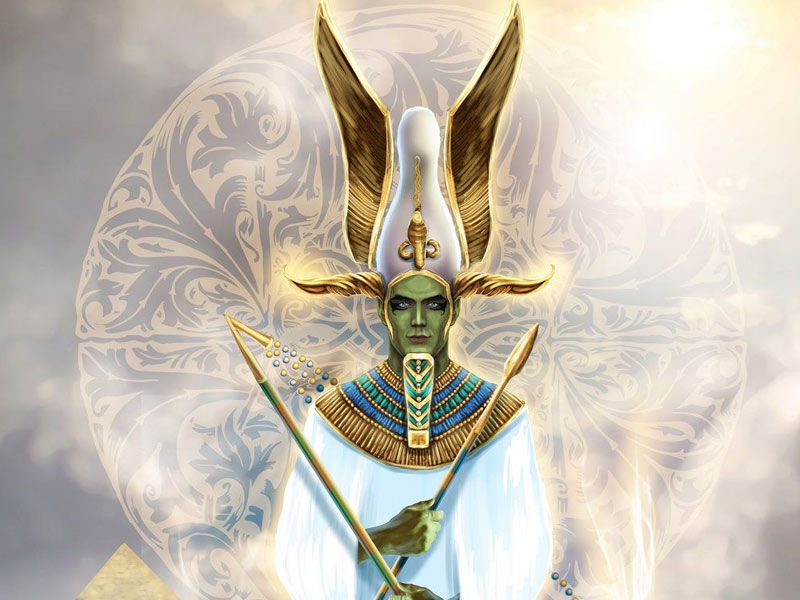
Osiris, the eldest son of the soil god Zeb and the sky goddess Nut, was worshipped as the deity of the afterlife by the ancient Egyptians, who believed in life after death. Osiris, who was often shown with green skin, was the deity of regeneration and development and was considered responsible for the rich floods and flora along the Nile’s banks. Osiris was assassinated by his brother Seth after marrying his sister Isis.
Despite being killed by his brother, Osiris was resurrected by Isis’s power and could have a child. Horus, the son of Osiris and Isis, avenged his father’s death and ascended to become Egypt’s next Pharoah. In contrast, Osiris became the God of the underworld and aided the pharaohs and people in their afterlives. He is shown as a mummified king, with just the green skin of his hands and face showing through the wrappings.
2)Isis

Isis’s roots remain a mystery. Unlike many Egyptian gods, she can’t be connected to a single location, and there are no definitive mentions of her in early Egyptian literature. She did, however, gain prominence over time, eventually becoming the most powerful goddess in the pantheon. Isis exemplified the typical Egyptian characteristics of a wife and mother as a loving wife. They revived Osiris after his murder and reared their son, Horus. As the wife of the God of the underworld, Isis was also one of the primary goddesses associated with ceremonies for the dead. Isis served as a goddess mourner with her sister Nephthys. Her mother’s care was often represented as extending to the deceased in the underworld.
Isis was one of the last Egyptian goddesses to be revered today. Her religion expanded as far west as Great Britain and as far east as Afghanistan during the Greco-Roman period when she was associated with the Greek goddess Aphrodite. Images of Isis with the newborn Horus have influenced Mary’s Christian images with the infant Jesus.
3)Horus
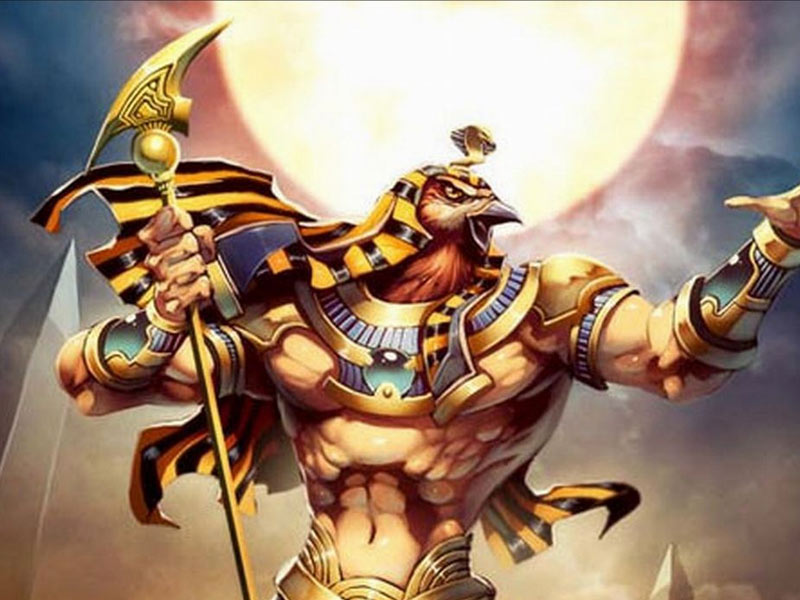
Horus was a sky deity connected with battle and hunting and was shown as a falcon or a man with a falcon’s head. Horus was also the personification of divine monarchy. The ruling king was seen to be a manifestation of Horus in various times. Horus was the son of Isis and Osiris. He was miraculously produced after Osiris was murdered by his brother Seth, according to the Osiris myth. Horus was brought up to revenge his father’s death.
Horus has lost his left eye in a battle with Seth, but his sight was miraculously restored by the deity Thoth. Horus’ right and left eyes were connected with the sun and moon, respectively. Thus the loss and restoration of Horus’ left eye provided a mythological explanation for the moon phases.
4)Seth
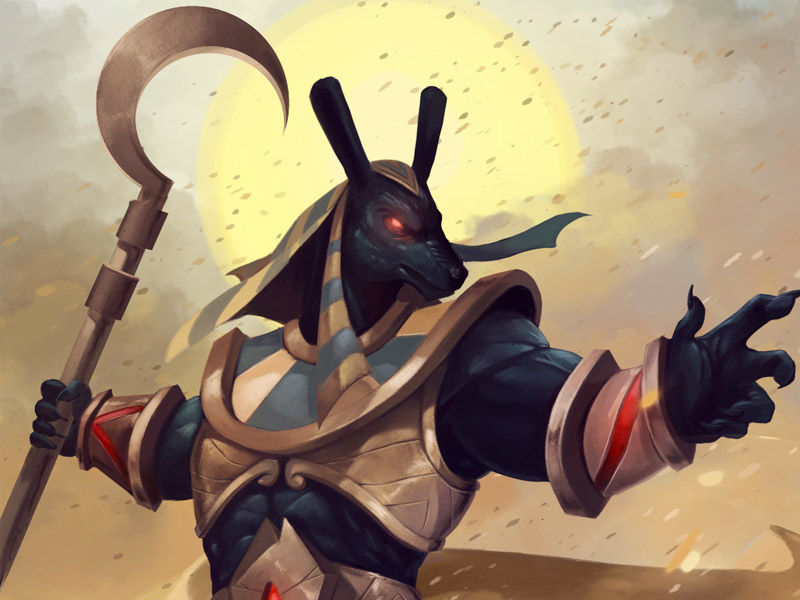
Chaos, bloodshed, deserts, and storms were all associated with Seth. He is the killer of Osiris in the Osiris myth. In certain versions of the tale, he fools Osiris into lying down in a coffin, which he subsequently seals shut.
Egyptologists have a problem with Seth’s look. He is frequently portrayed as an animal or as a person with an animal’s head. However, they are stumped as to what animal he is meant to be. His nose is generally lengthy, and his ears are squared at the points. He has a slender dog-like body and a straight tail with a tuft at the end of his completely animal form. Today, many experts believe that the Seth animal is a mythological composite and that no such species ever existed.
Also Read, The Legacy of the Great Egypt Pyramids
5)Ptah

Ptah led a triad of Egyptian gods who were worshipped at Memphis. Ptah’s wife, the lion-headed goddess Sekhmet, and the deity Nefertem, who may have been the couple’s son, were the other two members of the triad. Ptah’s first connections appear to have been with carpenters and builders. After he died, a son of Ptah, the 4th-dynasty architect Imhotep was deified.
Scholars believe that the Greek term Aiguptos, which is the origin of the name Egypt, was derived from a corruption of Hwt-Ka-Ptah, the name of one of Ptah’s sanctuaries.
6)Re/Ra

In Egyptian history, the noon sun, Ra or Re, has a significant role. Ra, the sun deity, has created the world and wears a sun disc around his head. Every dawn and sunset was seen as a new beginning. He was shown as a falcon-headed god who had a close relationship with Horus, earning him the title of Horus of the Horizon. Many ancient Egyptian gods were fused with Ra, and others, such as competing gods Ptah, Isis, and Apep, were created by him. Every day, he was said to sail across the sky on a boat and then make a nighttime journey via the underworld, where he would have to battle the serpent god Apophis to rise again.
7)Hathor
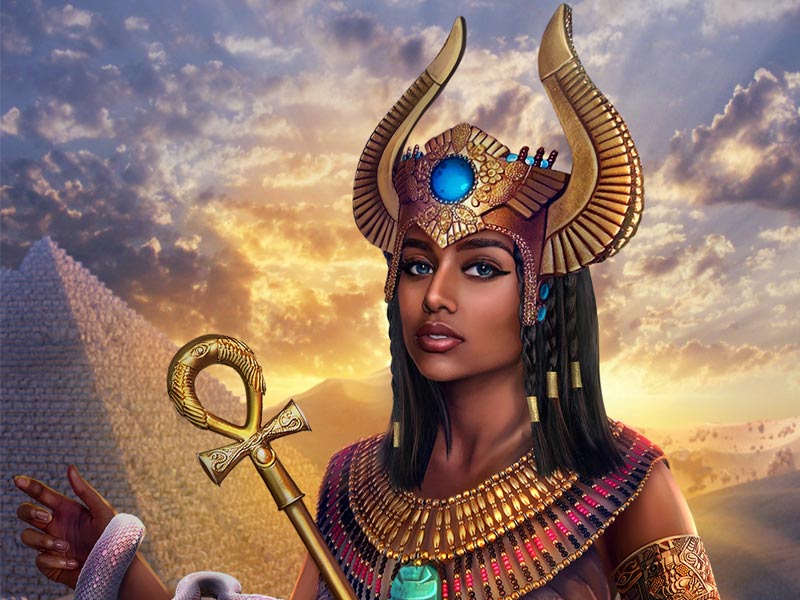
Hathor was frequently portrayed as a cow, a woman with the head of a cow, or a woman with the ears of a cow. Hathor was associated with maternity and fertility, and it was thought that she guarded women during childbirth. She was also known as “the lady of the west” and had a significant role in the afterlife. (Tombs were mostly erected on the Nile’s west bank.) She would greet the setting sun every night in some beliefs, and living people aspired to be welcomed into the afterlife in the same way.
8)Anubis
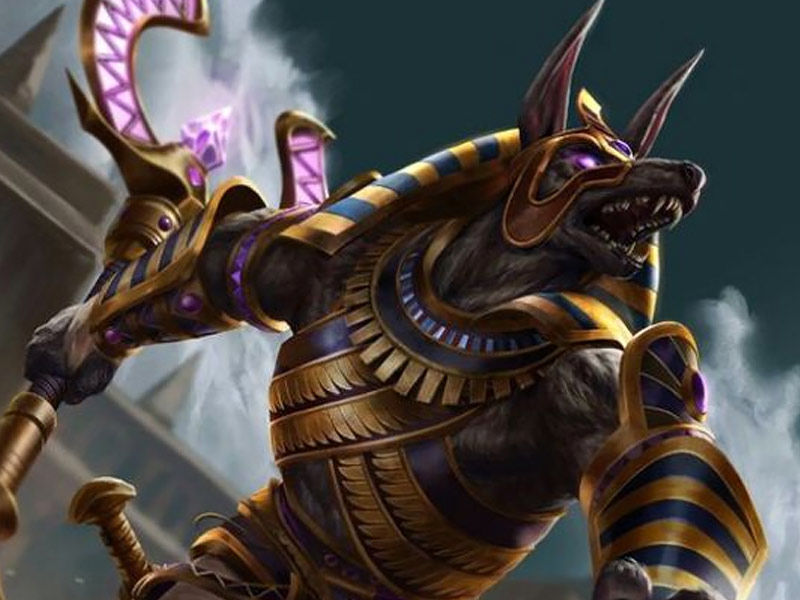
Anubis was involved with funeral rites and after-death care. He was generally shown as a jackal or a man with a jackal’s head. Egyptians would have seen jackals scavenging near graves, leading to the connection of jackals with death and funerals. Before Osiris rose to prominence as the underworld king, Anubis was the most important deity of the dead in the Old Kingdom (c. 2575–2130 BCE). According to the Osiris myth, Anubis embalmed and wrapped the body of the killed monarch and became the patron deity of embalmers.
Anubis guarded the underworld before Osiris took control. Anubis was the son of Ra and Nephthys and was a “psychopomp,” or divinity who aids in the afterlife. He was famed for mummifying the souls of the deceased and leading them to the afterlife. His dark complexion represented the dark Nile deposits that made the country so fruitful. Anubis, who had the head of a jackal and the body of a man, was also associated with the renaissance and the staining of dead bodies during embalming.
9)Thoth
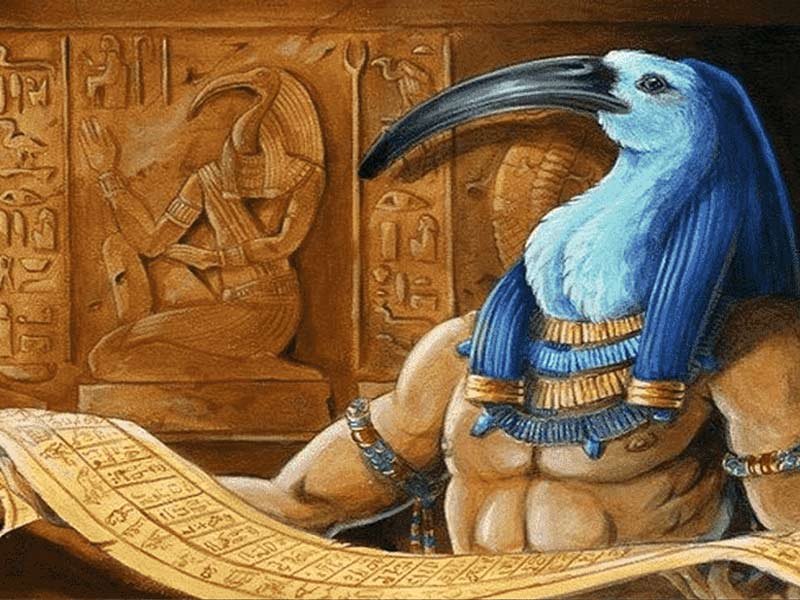
Thoth, the deity of writing and knowledge, was sometimes portrayed as a baboon, a holy ibis, or a man with an ibis’ head. He was said to be the creator of language and hieroglyphic writing and ascribe and counselor to the Egyptian gods. As the God of wisdom, Thoth was thought to have knowledge of magic and mysteries that the other gods lacked.
Thoth is shown as weighing the hearts of the deceased and delivering the judgment to Osiris, the God of the dead, in underworld scenes depicting the deceased’s judgment after death.
Thoth is a self-created deity who served as a judge in disputes between good and evil. Like his counterpart Ma’at, he was a master of both physical and divine rules, and his knowledge of mathematics allowed him to keep the cosmos running smoothly. He was regarded as a scientist, philosopher, and magician by the ancient Egyptians. This deity was regarded as ancient history’s most educated divinity. Thoth, also known as the moon God for maintaining time even when the sun was not visible, is credited with inventing the 365-day calendar.
Also Read, Machu Picchu: The Lost Wonder of the World
10)Bastet
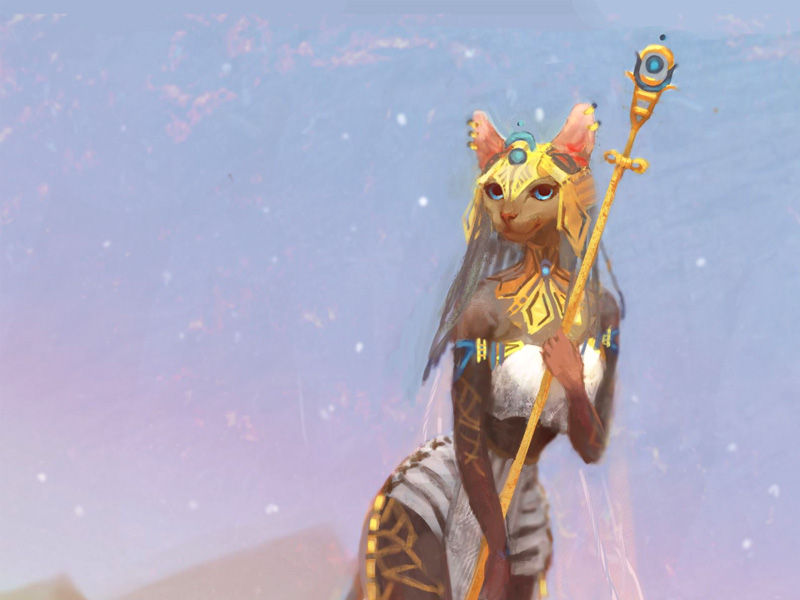
Bastet, the cat goddess, was originally depicted as a lady with the head of a lion or a wild cat. In the first millennium BCE, she assumed the less ferocious form of a household cat.
She was frequently shown as a regal-looking sitting cat in later centuries, with rings on her ears and nose. She became linked with the Greek goddess Artemis, the divine hunter and goddess of the moon, during the Ptolemaic era.
11)Amon
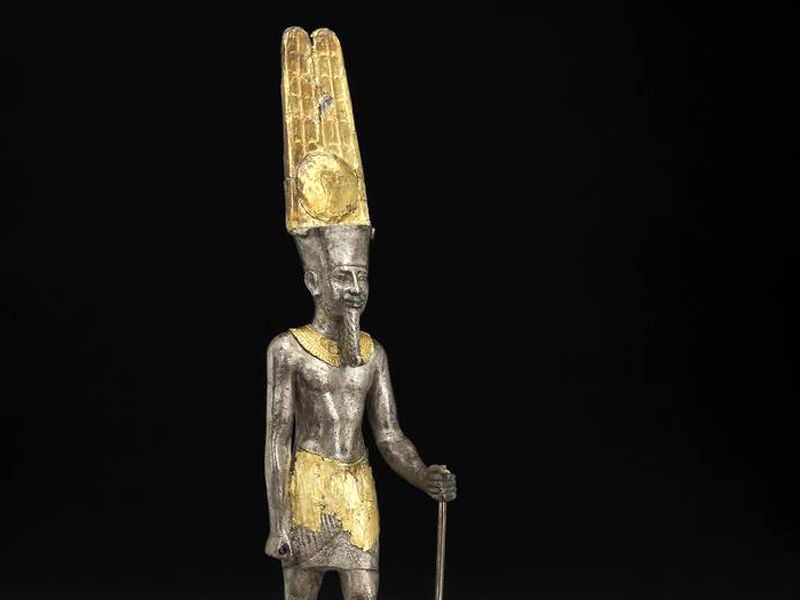
The Egyptian God Amun-Ra or Amon was regarded as the ruler of the Egyptian gods and goddesses, just as Zeus was to the Greeks. After merging with the solar deity Ra, he became Amun-Ra. His male counterpart, Amunet, was known as the Female Hidden One, and he was considered to be the father of the pharaohs. Amun and Mut, along with their son Khonsu, the moon deity, formed the Theban Triad, which was revered throughout ancient Egypt. Amun was revered not just in Egypt but also in other parts of the world.
The deity Amon was worshiped locally in Thebes’ southern city before rising to national prominence in the New Kingdom (c. 1539–1292 BCE). Amon was a deity of the air whose name most likely meant “hidden one.” He was generally shown as a guy with two vertical plumes on his crown. The ram and the geese were his animal emblems.
After the kings of Thebes revolted against the Hyksos dynasty and reinstated native Egyptian government across Egypt, Amon was given credit for their triumph. He became Egypt’s most powerful divinity after merging with the sun god Re, a position he held throughout the majority of the New Kingdom. The enormous temple complex dedicated to Amon-Re at Karnak is now one of Egypt’s most popular tourist attractions.
Egyptian Mythology has some of the most extensive and intricate pantheons of gods of any ancient civilization. Hundreds of Egyptian gods and goddesses were worshipped throughout Egyptian history. The majority of them had a primary connection (for example, with the sun or the underworld) and a physical shape. Individual gods’ traits might be difficult to nail down. However, as Egyptian gods grew and decreased in power and changed in ways that matched to changes in Egyptian culture, they might change through time.



























